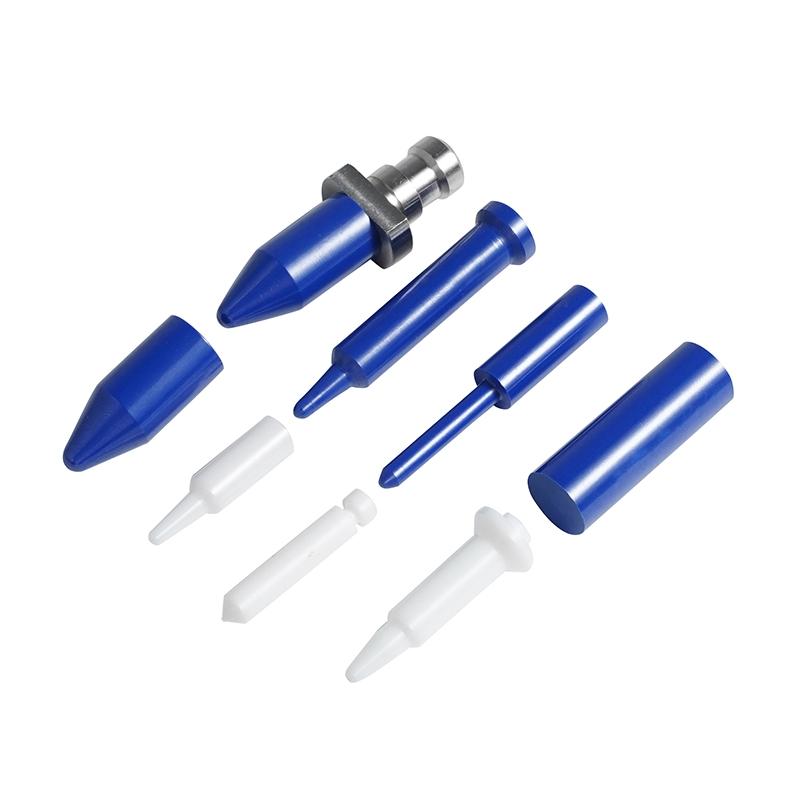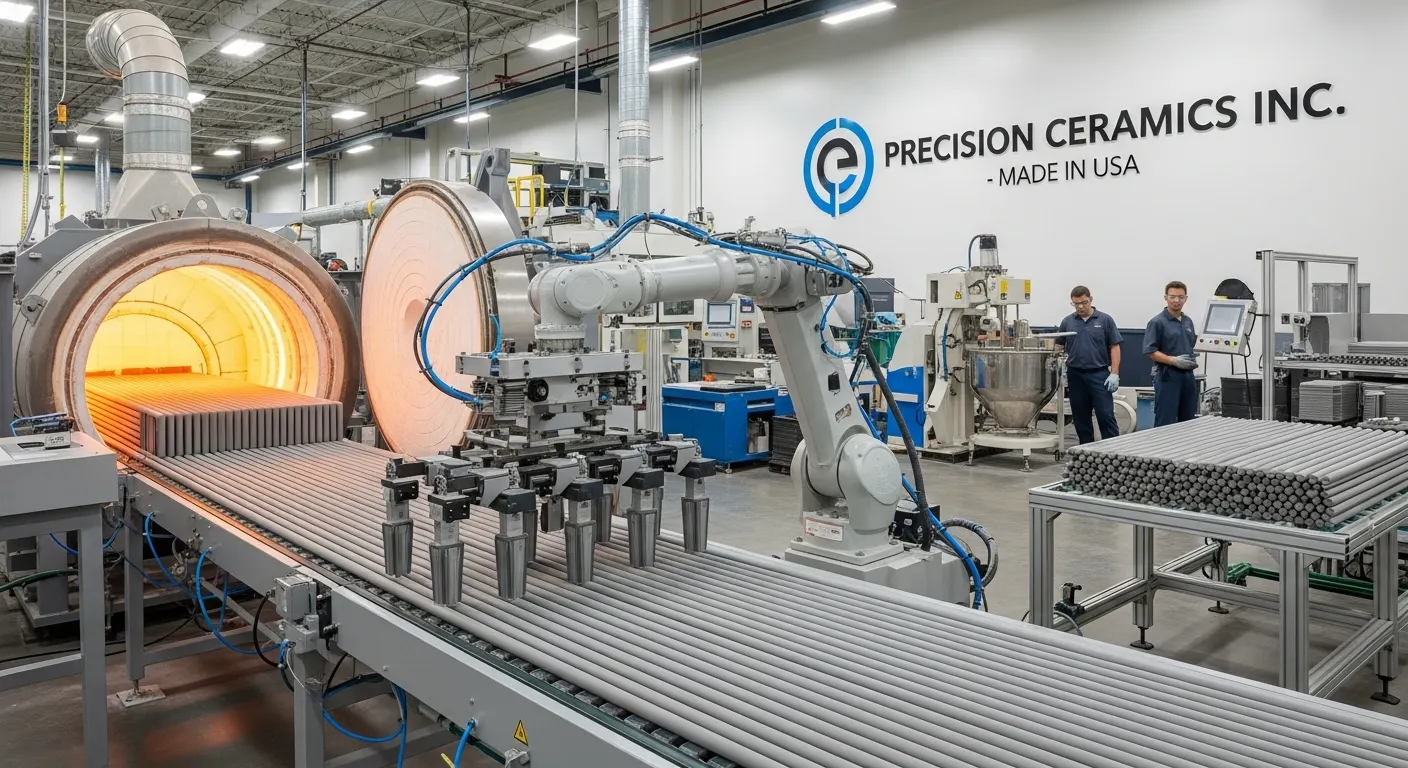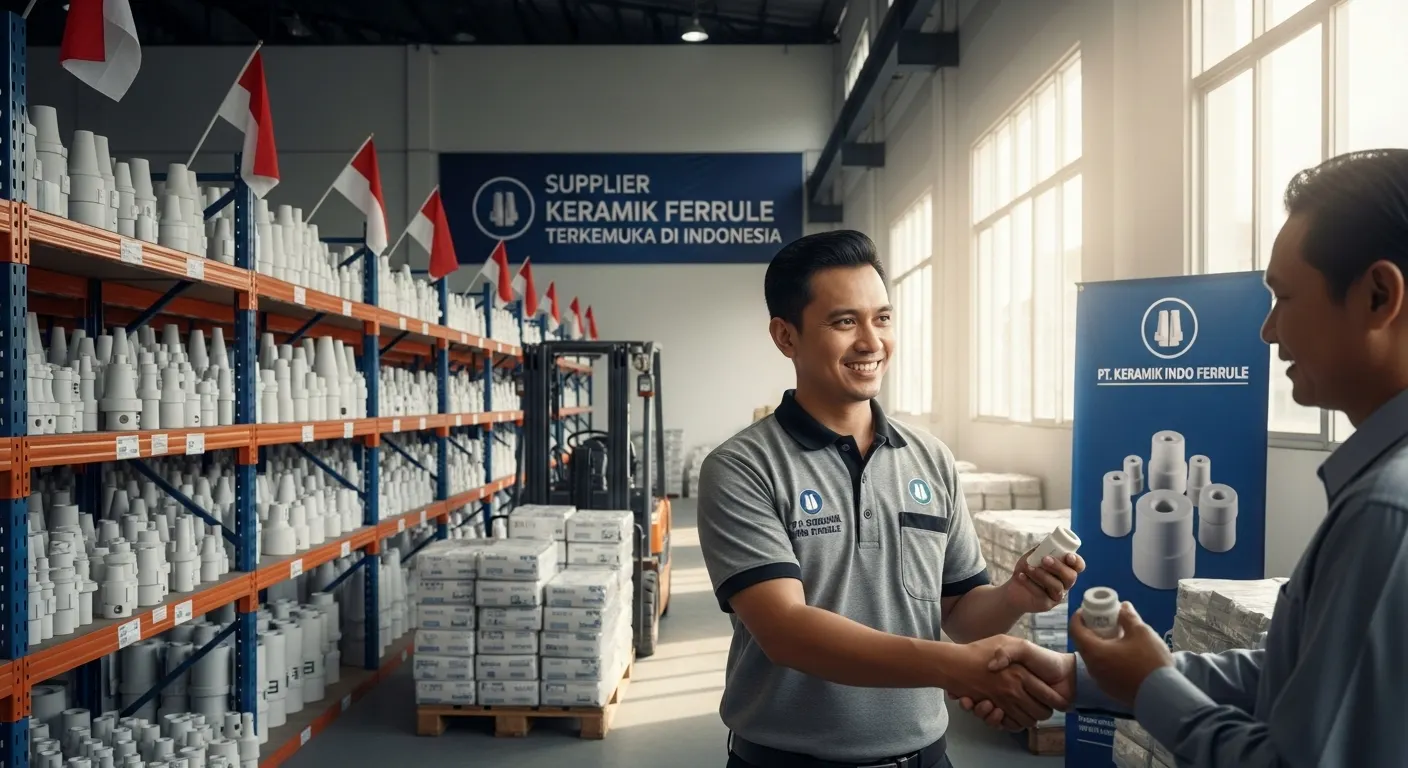Global SC Type Ceramic Sleeve Supplier
A global SC type ceramic sleeve supplier is an essential partner for the telecommunications industry. These suppliers source and distribute one of the most important components in fiber optic networks. The SC-type sleeve is a precision-molded part. It is designed for one specific, critical task: aligning fibers. This alignment happens inside a fiber optic adapter. The quality of this alignment determines the speed and reliability of a data connection.

The SC connector has been a standard for decades. Its reliability and ease of use made it a popular choice. This long history means SC connectors are installed in networks all over the world. A global supplier must manage a complex supply chain. They must deliver consistent, high-quality 2.5 mm sleeves to any market. This includes established markets like ceramic sleeves USA and ceramic sleeves Europe. It also includes rapidly growing regions that source from ceramic sleeves supplier India and ceramic sleeves Indonesia.
What Is an SC Type Ceramic Sleeve?
An SC type ceramic sleeve is the alignment component for an SC connector. The name "SC" stands for Subscriber Connector, or sometimes Square Connector. It was developed in the 1980s and became a global standard. The sleeve is the small, cylindrical part inside the SC adapter. When two SC connectors are plugged into the adapter, the sleeve holds them. It ensures the two fiber cores are perfectly pointed at each other.
The 2.5 mm Ferrule Standard
The most important specification of an SC sleeve is its size. It is built to accept a 2.5 mm ferrule. A ferrule is the precision pin, usually ceramic, that holds the optical fiber. The SC, ST, and FC connectors all use this 2.5 mm ferrule standard. This common size defined a generation of fiber optic hardware. The ceramic sleeve must have an inner diameter (ID) that is just microns larger than 2.5 mm. This creates a snug, precise fit.
Zirconia: The Material of Choice
SC type sleeves are not made from just any ceramic. They are made from Yttria-Stabilized Zirconia (Y-TZP). This advanced material is the key to the sleeve's performance. Zirconia offers a unique combination of properties:
- Extreme Hardness: Zirconia is very hard. It resists wear and scratches. This is vital. A sleeve may have connectors inserted and removed thousands of times.
- High Fracture Toughness: This is zirconia's most important trait. Unlike other ceramics, it is not brittle. It can absorb impact and stress.
- Smooth Surface: Zirconia can be lapped and polished to a mirror-smooth finish. This prevents the sleeve from damaging the fiber ferrule.
- Thermal Stability: The sleeve will not expand or contract with temperature changes. This keeps the fiber alignment stable.
In contrast, older metal sleeves (like phosphor bronze) would wear out. The metal would flake off and block the fiber. Zirconia is a superior material in every way.
The Split Sleeve Design
Most SC ceramic sleeves are "split" sleeves. This means a single, narrow slit is cut down the length of the tube. This slit is a crucial design feature. It allows the sleeve to flex slightly. When a ferrule is inserted, the sleeve compresses. This creates a gentle, consistent gripping force. This grip holds the ferrule securely. It also ensures a perfect fit even if the ferrule's diameter is off by a micron.
The Role of a Global Supplier
A global SC type ceramic sleeve supplier does more than sell parts. They are a critical logistics and quality partner. They must manage a supply chain that spans continents.
Managing a Worldwide Supply Chain
The demand for SC sleeves is global. A single supplier may ship to dozens of countries. Their role involves:
- Sourcing: Identifying and vetting manufacturers. This often involves working with large-scale producers, such as those that supply ceramic sleeves China.
- Inventory: Maintaining large-scale, strategic inventory. This allows them to ship parts quickly to any customer.
- Logistics: Handling all aspects of international freight, customs, and import duties.
This work ensures a network builder in one country can get the same part as one in another.
Ensuring Consistent Quality at Scale
This is the supplier's most important job. When buying millions of components, quality must be consistent. A global supplier cannot just trust their manufacturer. They must have their own quality system. This includes:
- Strict Vetting: Auditing manufacturers for their process controls.
- Batch Testing: Taking samples from every shipment. They use their own metrology tools to check the parts.
- Traceability: Marking every batch. If a problem is found, they can trace it back to the exact production run.
A good supplier is a quality firewall. They stop bad parts from ever reaching the customer.
Logistics and Inventory Management
A global supplier must be an expert in logistics. They understand global shipping lanes. They have warehouses in strategic locations. This allows them to offer fast, reliable delivery. They can manage inventory for large customers. This is called a "Just-in-Time" system. The customer does not have to store millions of sleeves. The supplier delivers them as needed.
Manufacturing Process of SC Sleeves
To trust a supplier, one must understand the product. The manufacturing of a ceramic sleeve is a high-tech process. It turns fine powder into a sub-micron precision part.
Step 1: Raw Material Formulation
The process starts with nanoscale powders. These are primarily zirconia and yttria. These powders are mixed in exact ratios. A polymer binder is added. This binder acts like a glue. It holds the powder together. The mixture is blended for hours. It must be perfectly uniform.
Step 2: Injection Molding and Forming
The powder-binder mixture is heated. It becomes a thick, paste-like material. This paste is injected at high pressure into a steel mold. This mold is a precise negative of the sleeve. This process, called Ceramic Injection Molding (CIM), forms the "green part." This part is fragile and larger than the final sleeve.
Step 3: Debinding and Sintering
The green parts are put in a special furnace. This stage has two parts:
- Debinding: The part is heated slowly. The polymer binder is carefully burned away.
- Sintering: The temperature is raised to over 1,400°C. The zirconia particles fuse together. The part shrinks. It becomes incredibly dense and hard.
This thermal process is extremely difficult to control. It is where most defects can occur.
Step 4: Precision Grinding and Lapping
After sintering, the sleeve is hard. But its dimensions are not yet perfect. It must be finished.
- Grinding: The outer diameter (OD) is ground with diamond wheels. This makes it a perfect cylinder.
- Lapping: The inner diameter (ID) is polished. A fine diamond slurry is used. This lapping creates the smooth, precise inner wall.
This is the most critical step for performance. The ID must be perfect.
Step 5: Slitting and Final Inspection
If it is a split sleeve, it goes to a saw. A thin diamond wheel cuts the narrow slit. The ends of the sleeve are also beveled. This is called chamfering. It guides the ferrule. Finally, the part goes to inspection.
Quality Assurance for SC Sleeves
A global SC type ceramic sleeve supplier lives and dies by quality. Their quality assurance (QA) program must be robust.
Adherence to ISO 9001 Standards
The first sign of a good supplier is ISO 9001 certification. This is an international standard for quality management. It proves the supplier has:
- Documented processes.
- A system for quality control.
- A commitment to continuous improvement.
- A process for handling customer issues.
This is the baseline for a professional supplier.
Sub-Micron Metrology and Testing
A supplier must be able to measure their own parts. They need a metrology lab.
- Air Gauges: These are the standard for measuring the inner diameter. They push air through the sleeve. By measuring the airflow, they can calculate the ID to 0.0001 mm.
- Laser Micrometers: These scan the outer diameter.
- Video Inspection: Cameras check the length, chamfers, and look for cracks.
- Concentricity Testers: This is a key test. It checks if the inner hole is perfectly centered.
Performance Metrics: Insertion Loss
The final test is performance. A good supplier will test their sleeves in real adapters. They measure the insertion loss (IL). This is the amount of signal lost at the connection. A high-quality SC sleeve will allow for connections with very low loss. This is often less than 0.2 dB. They can provide these test reports.
Reliability and Durability Testing
A supplier must also test for reliability.
- Mating Cycles: How many times can a connector be plugged in? A good sleeve should last for 500 to 1,000 cycles.
- Temperature Cycling: The sleeve is tested in hot and cold. The performance must remain stable.
- Vibration Testing: The sleeve is shaken. It must hold the fiber securely.
Applications of SC Type Sleeves
The SC sleeve is one of the most widely deployed components. Its applications are everywhere.
Telecommunication Networks (FTTx)
SC connectors are a workhorse for Telecom. They are used in:
- Fiber-to-the-Home (FTTH): The SC connector is often the plug in the wall.
- Central Offices: They are used in patch panels to manage the network.
- Field Cabinets: Their robust, simple design makes them ideal for outdoor use.
Data Centers and Enterprise Networks
While newer connectors are popular, SC is still present. It is used in many enterprise networks and older data centers. Its simple push-pull design is easy for technicians to use. It provides a solid, reliable link for servers and switches.
CATV and Broadcast
The cable television (CATV) industry was an early adopter of SC connectors. They are used to distribute video signals. Broadcast companies also use them for high-definition video transport. Their reliability is critical.
Test and Measurement Equipment
Fiber optic test equipment often uses SC ports. This includes power meters and OTDRs (Optical Time-Domain Reflectometers). The sleeves in this equipment must be extremely durable. They face constant use.
How to Evaluate a Global Supplier
Choosing a global SC type ceramic sleeve supplier requires a careful process.
Technical Specifications and Datasheets
The first step is to ask for a datasheet. This document should list:
- The material (Y-TZP Zirconia).
- The inner and outer diameter tolerances.
- The concentricity.
- The results of insertion loss testing.
- The results of durability testing.
A supplier who cannot provide this is not a professional. A general ceramic sleeves guide can help you understand these specifications.
Communication and Technical Support
A global supplier must be easy to communicate with. They should have a technical support team. You should be able to ask an engineer a question. Can they help you troubleshoot a connection problem? Do they understand your application? This support is as valuable as the part itself.
Certifications and Compliance (RoHS, REACH)
Ask for their ISO 9001 certificate. Also, ask for compliance documents. These include RoHS (Restriction of Hazardous Substances) and REACH. These are international standards. They prove the parts are free from lead, mercury, and other toxic materials. This is a legal requirement in many parts of the world. For more on standards, organizations like the International Electrotechnical Commission (IEC) define the specifications for these parts, such as IEC 61754-4 for SC connectors.
Requesting Samples and Prototypes
Never place a large order without testing samples. A good supplier will provide samples. You should test these in your own adapters. Check the fit. Check the performance. The sample is their promise of quality. The production order must match the sample.
Conclusion: The Importance of a Reliable Supplier
The SC type ceramic sleeve is a "legacy" component. But it is a legacy that runs the world. Billions of these parts are in active use. A global SC type ceramic sleeve supplier is a partner in keeping these networks running. They are also a partner in building new ones.
Choosing a supplier is not about price. It is about trust. It is trust in their quality system. A great supplier provides more than a component. They provide a guarantee. This is a guarantee of consistency, reliability, and performance. This guarantee is the foundation of our connected world.
 English
English 中文
中文





